Jewish tradition teaches that a wedding celebrates the creation of a new world, a new beginning that may change the meaning of everything that has come before. We love the endless possibilities to be inspired by and to build upon ancient Jewish wedding rituals.
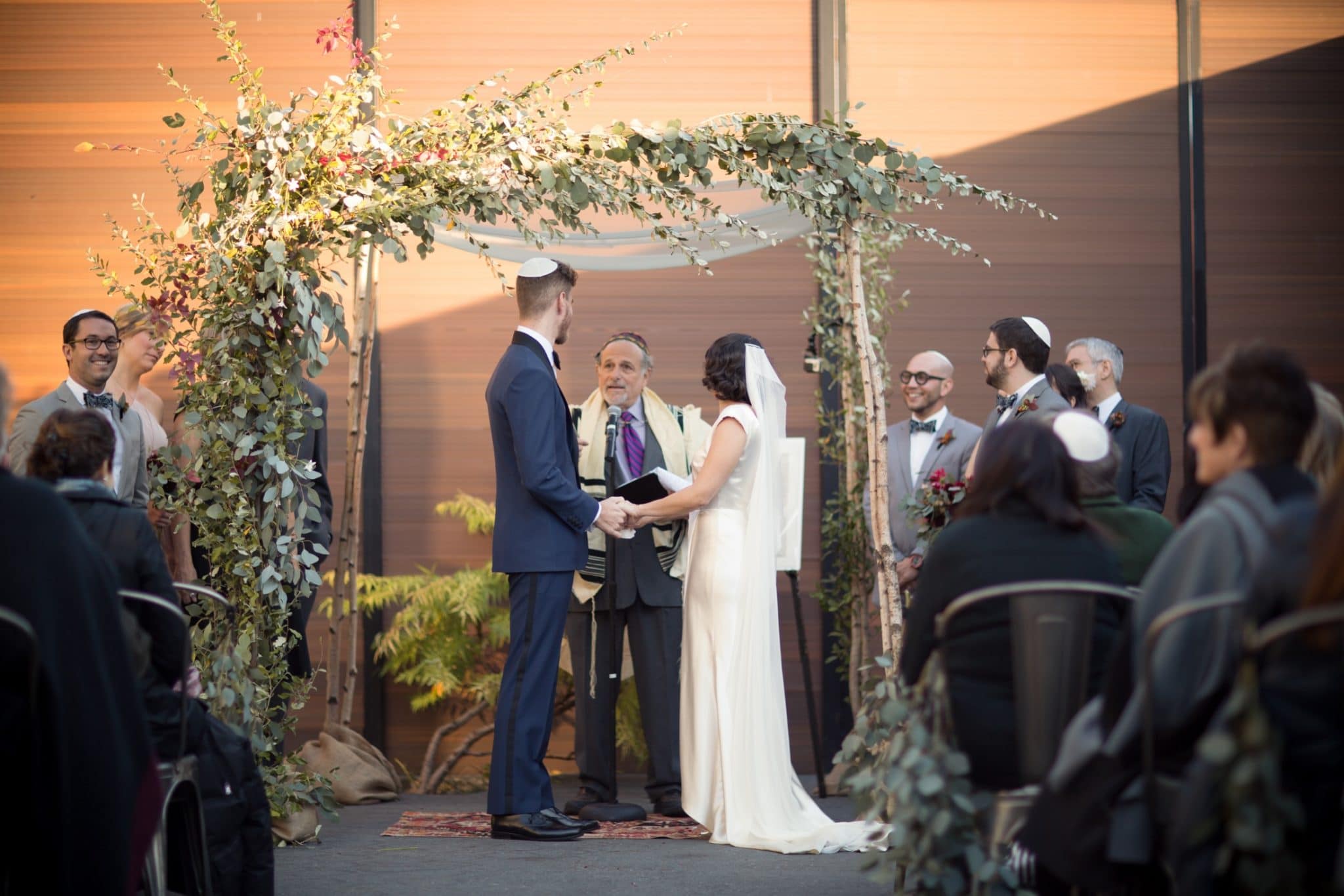
In Part II of our wedding guide, we describe Jewish wedding traditions in accessible and inclusive language and provide suggestions for how to incorporate these customs into your big day in a contemporary way.
This guide is for anyone!
Whether you’re a totally Jewish couple with a desire to make your ancient traditions your own, a mixed religion couple attempting to combine your customs without excluding or pissing anyone off too much, a non-Jew who loves the idea of a globally inspired and spiritually diverse wedding, or a wedding guest who is just trying to understand what to expect at your first Jewish (or Jew-ish) wedding, we’ve got something for you.
Logistics
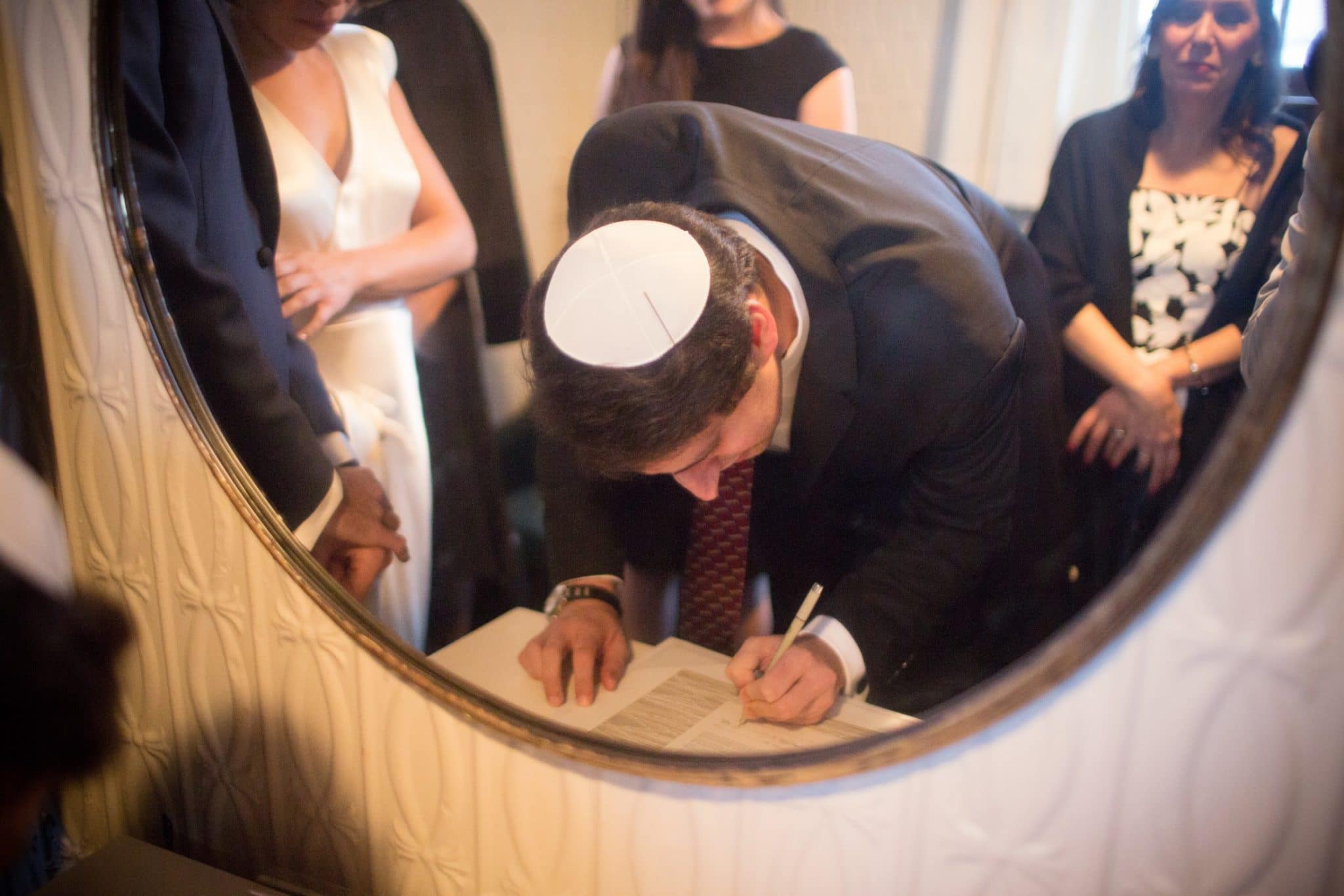
Day and Time
Sundays are a popular day for Jewish weddings, since Friday night through Saturday evening (about an hour after sundown) is Shabbat, the Jewish day of rest. Jewish weddings are not typically hosted on other Jewish holidays either.
A Sunday wedding can be tricky for folks to get to, since it often means taking time off of work to travel. A Saturday evening winter wedding is a good workaround, since the sun goes down much sooner and Shabbat ends earlier, so a wedding can start around dinnertime.
Venue
Jewish weddings can happen in a synagogue or really anywhere else, so find a place that works for you. Ultimately, it’s all about the chuppah (more about the chuppah below).
Officiant
For a Jewish wedding to be legit, there are only three requirements: the two people getting married, two witnesses who are not related to either of them, and a ring (or other object of modest value) to exchange. Jewish law simply requires that “a person sufficiently knowledgeable to perform the ceremony” is necessary for a Jewish marriage, so feel free to ask a friend or relative to officiate.
Whomever you ask, be sure to find out about the officiant’s basic religious requirements, areas of flexibility, approach to pre-wedding conversations and ceremony design, and fee. Many rabbis will not perform intermarriages, and those who do may have different requirements; for instance, they may or may not co-officiate with clergy of other faiths.
Invitations
We love how inclusive and egalitarian Jewish wedding invitations are. According to Jewish tradition, one person is not married “to” the other. Rather, two people are joined together in marriage, so the wording for a Jewish wedding invitation uses the word “and” between the names of the two people getting married, e.g., “We invite you to the wedding of Danya and Andrew,” not “We invite you to the wedding of Danya to Andrew.” The Jewish faith also considers marriage the true joining of two families, so the names of both sets of parents appear on the invitation.
Jewish wedding invitations often incorporate Hebrew text and religious quotes. The general “feel” of the Jewish wedding invitation wording is one of joy and celebration. Words such as “celebrate, joy, bliss, pride, and special day” are much more common than “holy matrimony” or “honor of your presence,” which you might see in more formal Christian invitations. There is also a Jewish tradition of giving to the poor during times of personal joy, so it’s not surprising to see couples ask for a charity donation on their invitation.
Before the Wedding
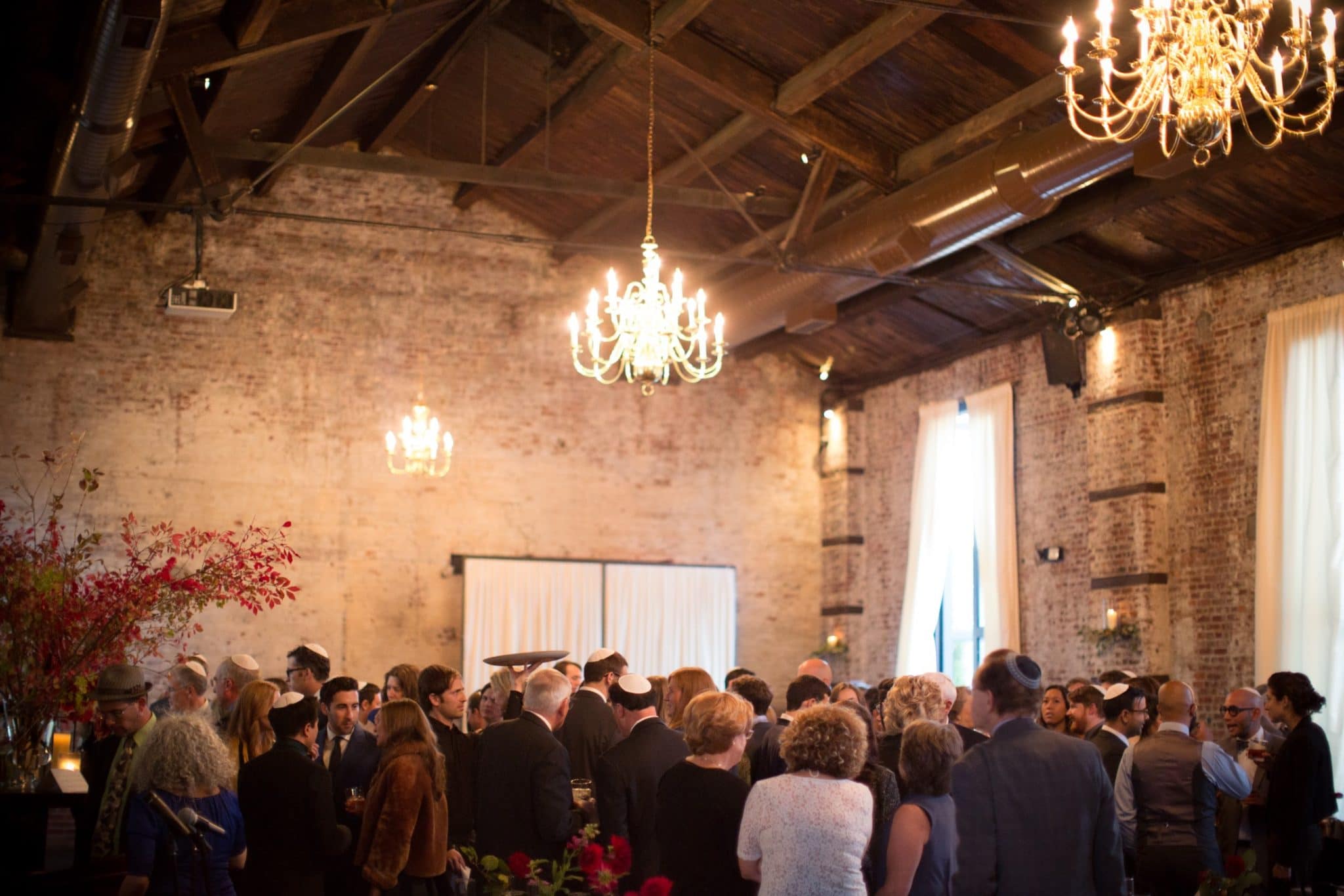
Separation
While not a strictly Jewish custom, Jewish couples traditionally separate for a day or more before the wedding. For some, this is a calming tradition that allows each person to focus before the wedding, but it may set off nerves or anxiety in others. This may be practical for couples who already live separately, but not for couples who share a home.
Ritual Bath (Mikveh)
Before getting married, it’s traditional for the groom or bride to emerge in a ritual bath which represents a fresh start, even a rebirth. They emerge cleansed of all that came before and ready to marry and begin a new life. Traditionally, a mikveh has running water, some natural water, and a space in which the whole body can be submerged – that means a lake or a large jacuzzi with a running water spout and a few drops of water from a natural spring will do.
Prayer
Jewish tradition says that a betrothed couple is closer to God on the day of their marriage. Couples may choose to attend prayer services preceding the wedding or to find time together or separately for a personal reflection or intention.
Fasting
It is customary for the couple to fast for at least the morning of the wedding, since this day is a symbolic “Day of Atonement” for them as they end their separate lives and start one together. Practically speaking, if you’re concerned about not eating all morning before your wedding, you might consider a cleanse of some sort or giving up rich foods and sticking to simple fare (which could be a good idea anyway if your stomach is going crazy with nerves and excitement!).
Tisch · Hachnasat Kallah · Badeken
The tisch and badeken are traditions that are typically divided along gender lines, but they can be adapted for all kinds of couples and weddings. We see lots of joy, wisdom, and love at the heart of this set of customs. They are an opportunity for guests to greet the couple and set the mood for the rest of the day.
Traditionally, the tisch is “the groom’s table” where men gather for learning – and scotch – while women gather around the bride as she gives each of them a blessing. The groom often gives a lesson at the tisch while his guests interrupt him with roast-like questions and jokes to help him relax before the wedding ceremony.
When the tisch is complete, the men dance and sing their way into the room where the bride and her friends and family are sitting and the couple sees each other for the first time that day. This is a common time for the ketubah (more about this soon) to be signed.
Bedecken means “checking” in Yiddish, and it refers to the groom lowering the bride’s veil just before the wedding ceremony in remembrance of 1) Rebecca modestly veiling herself when she first sees Isaac, the man who will become her husband, and 2) Jacob being tricked by his father-in-law into marrying the “wrong” sister, Leah, before he is allowed to marry Rachel, his desired bride. If the couple has been fasting, this is when they break their fast. There is often food and drink at the bedeken and guests are invited to witness the occasion.
Couples may decide to host a tisch and toast together. A fun, contemporary interpretation of the bedeken might be a Newlywed Game-style activity where the couple publicly answers silly questions about each other to “prove” they’re marrying the “right” person. This could also be a chance to meld cultural traditions. For instance, the baarat, the Indian wedding tradition where the groom’s friends and family lead him to the bride and her community on a white horse, isn’t far off from the Jewish tradition of singing and dancing the groom to meet the bride from the tisch to the badeken.
Ketubah
The ketubah is the Jewish marriage contract. It is typically written and recited in Aramaic. While it’s meaningful to utilize an ancient language that Jews have used for thousands of years, it may be more accessible to order a ketubah in Hebrew or English or all of the above.
There are very few requirements for the lettering or the form of the ketubah, but when a physical object is needed to fulfill a Jewish commandment, hiddur mitzvah, literally meaning “the beautification of a commandment,” suggests it should be as beautiful as possible. There are hundreds of ketubot (the Hebrew plural of ketubah) that are true pieces of art worth hanging on your wall!
The traditional ketubah text requires much of the groom, but nothing of the bride, and there is mention of a ritual exchange of silver for the bride. Today, may couples create entirely custom text reflecting their values and hopes for marriage, which better matches our values and practices today. Jewish law requires two Jewish men to sign the ketubah as witnesses – one way to adapt this custom is to ask anyone whom you trust to be responsible for contributing to the success of your marriage.
During the Wedding
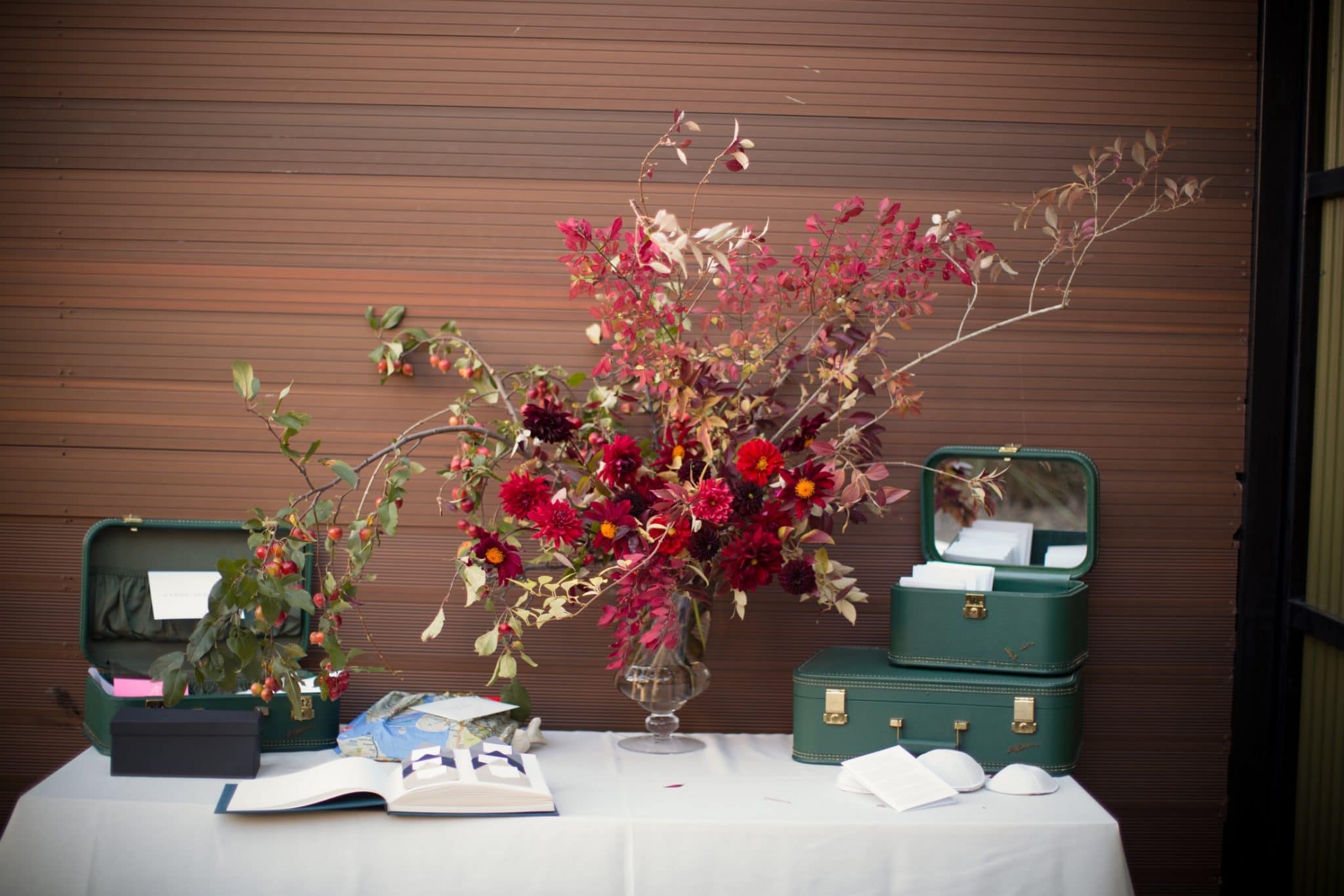
Kippot
A kippah, in Hebrew, or yarmulke, in Yiddish, is a head covering typically worn by Jewish men during prayer or all day every day as an overall sign of respect for God. Today, many Jewish women also wear kippot (the Hebrew plural of kippah).
There are endless types of kippot available for Jewish celebrations – everything from simple white suede to sports-themed versions and custom crocheted or illustrated kinds. It is common to see a basket of kippot laid out by the wedding programs with a short explanation and an offer for anyone – Jewish or not – to take a kippah to wear during the ceremony or as a keepsake from the event. Often, the names of the couple and the date of the event are embroidered on the inside of the kippah, but you might choose to include a meaningful quote or saying that is representative of the two of you or the experience you want your guests to have.
Walking down the aisle
A Jewish wedding is, in part, about two families joining, so it is common for both sets of parents to walk their children down the aisle and to stand under the chuppah, the Jewish wedding canopy (see right below for more about this). It may feel safe and calming to have your closest family members – whether they’re blood relatives or family-by-choice – ushering you into this big moment and standing beside you in support.
Chuppah · Circling Each Other
A chuppah is a structure with four open walls that represents the home you and your partner will create together and the hospitality you’ll provide. A chuppah can be simple or elaborate, wood or metal, bedecked in florals or spare, freestanding or held up by people. This is a great opportunity to envision a chuppah that matches the look and feel of your wedding. Usually, a florist will be able to help you obtain or even build your chuppah, or you may have family members or friends who would enjoy crafting one for you as a gift or personal contribution to your wedding.
If you’ve opted for a freestanding chuppah, you can honor people who mean a lot to you by having them hold one of its four poles. You can personalize the chuppah covering in limitless ways – use an old prayer shawl or textile that is a family heirloom, solicit small pieces of fabric with messages on them from friends and family to make a quilt, it’s up to you!
Traditionally, a Jewish bride circles the groom seven times beneath the chuppah, but many couples now take turns circling each other three times and simultaneously circle each other for the final go. This custom is one way to show that the two people getting married are the center or focal point for one another and that they will offer each other protection and embrace.
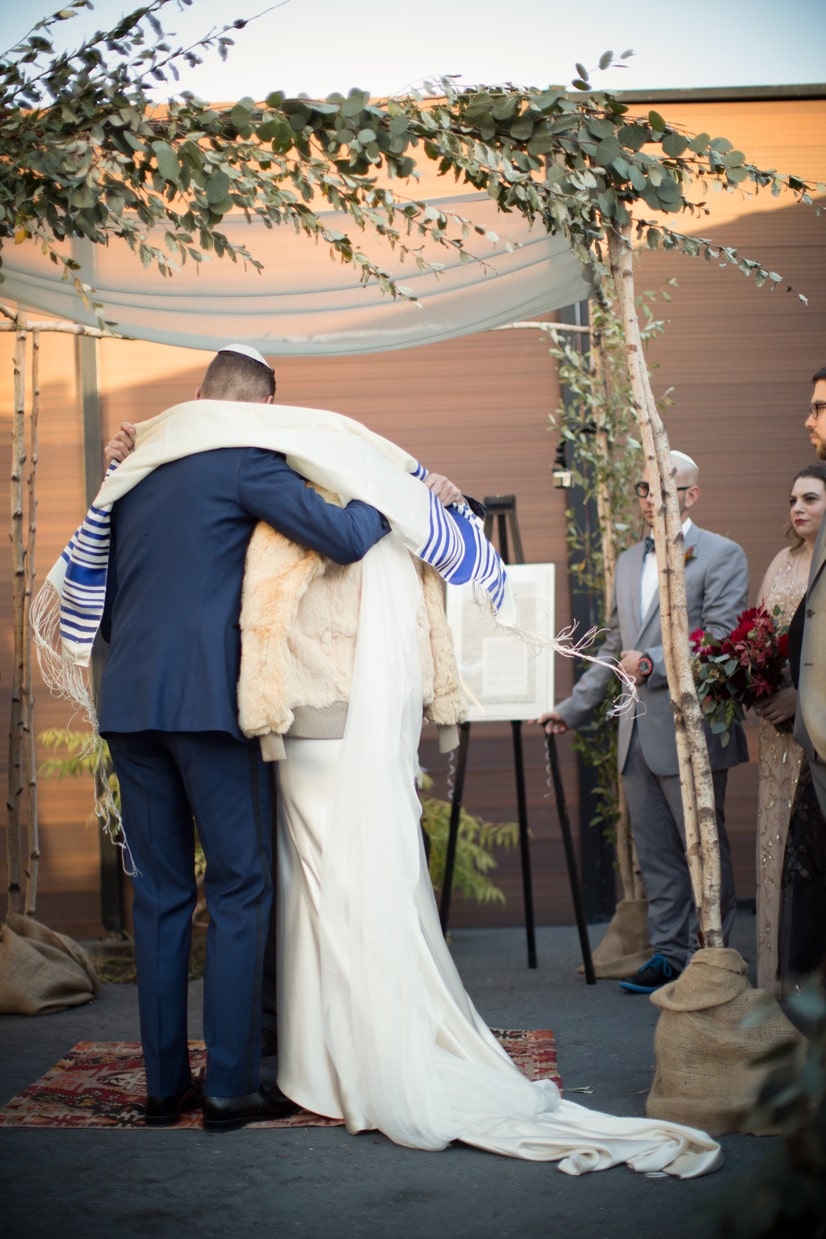
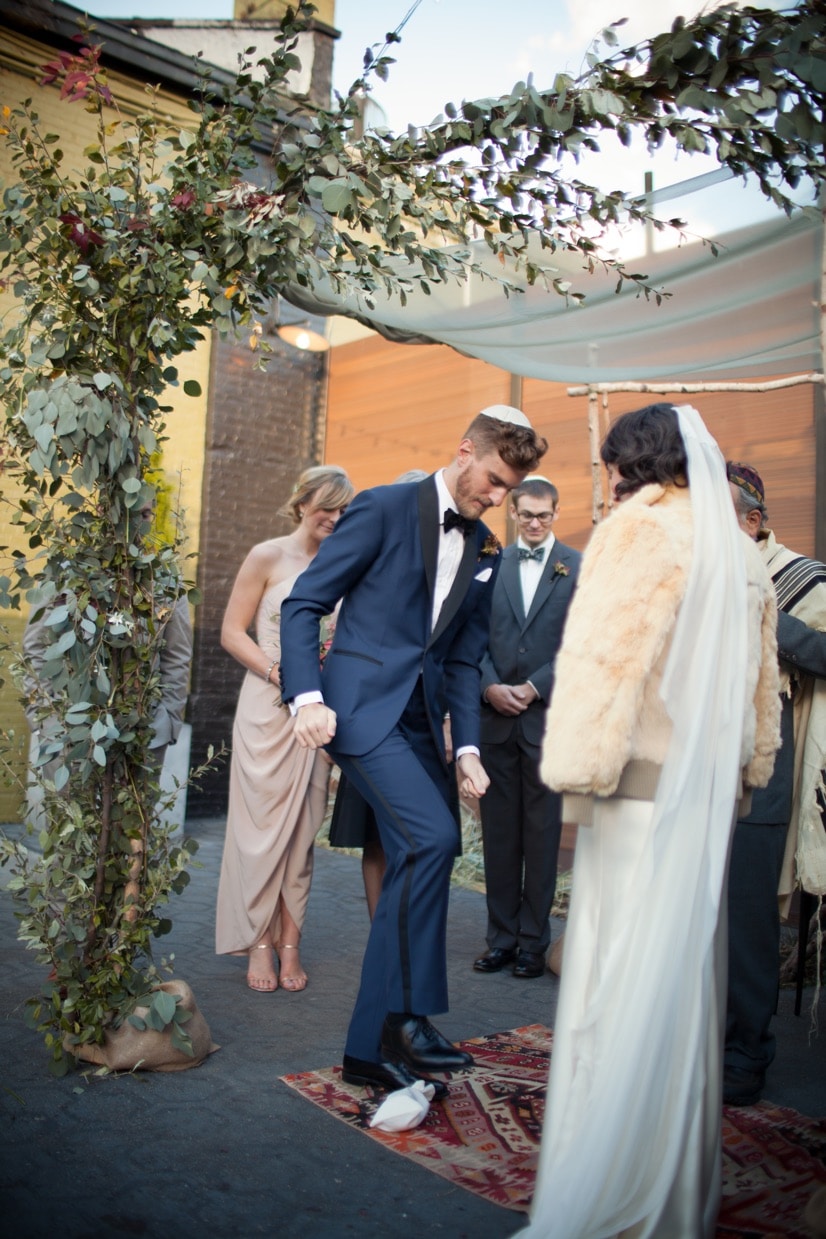
The Ceremony
The wedding ceremony is made up of two main parts: the Erusin, which symbolizes a couple’s engagement, and the Nisuin, the nuptials. Originally, the Erusin and Nisuin were performed separately, up to a year apart; now, they are both performed on your wedding day. The Erusin blessing are recited to bless the marriage and the first cup of wine. All Jewish wedding blessings are chanted over a full cup of wine to represent the overflow of joy that is wished for each new couple.
The Nisuin begins after the officiant reads the ketubah out loud and presents it to the bride. The second full cup of wine is blessed by the reading of the Sheva Brachot, seven blessings that represent the creation of the world. The bride and groom drink from the same cup, affirming that, throughout life, you will experience both joy and sorrow, but always together.
You can choose to read the ketubah out loud prior to the main ceremony at the tisch and badeken, or, perhaps you don’t read it out loud at all and you display it somewhere in the reception area for guests to view on their own time. The ketubah is traditionally presented to the bride because of its original focus on the groom’s responsibility to her, but you may choose not to have it formally presented or to both accept your joint contract and commitments from the officiant at the same time.
The Sheva Brachot can be adapted in a number of meaningful ways. You can honor people by asking them to read one or more of the traditional seven blessings. In addition to or instead of the seven blessings, you can ask friends to contribute their own personal blessings for you and your partner, or you can have them read quotes or passages that you compile and that hold significance for you.
Exchanging rings
The exchange of rings occurs between the Erusin and the Nisuin. Jewish wedding bands are typically simple rings with no embellishment or breaks. The smooth band represents the wholeness and continuity that you hope to achieve in your marriage.
First, the ring is placed on the right forefinger before it is placed on the ring finger of the left hand – tradition says that there is a vein in the right forefinger that runs directly to the heart. The mutual acceptance of the rings is a confirmation that both people are ready and committed to enter into marriage.
Breaking the glass
Your wedding day is a day of irrevocable change. Your separate lives end and your life as a married couple begins as soon as you stomp on a glass. This broken glass is also a reminder that relationships are fragile and must be treated with great care, love, and mutual respect. Additionally, this glass is a way to remember that, although this day is one in which you are joyful beyond measure, the world is broken in many ways and we are responsible for its repair.
Once the glass is broken, everyone yells, “Mazal Tov!” The expression comes from the Hebrew word for “destiny,” and, while the phrase is literally translated as “good luck,” it really means “your fortune has been good” and is an acknowledgement of this fact.
After the Wedding
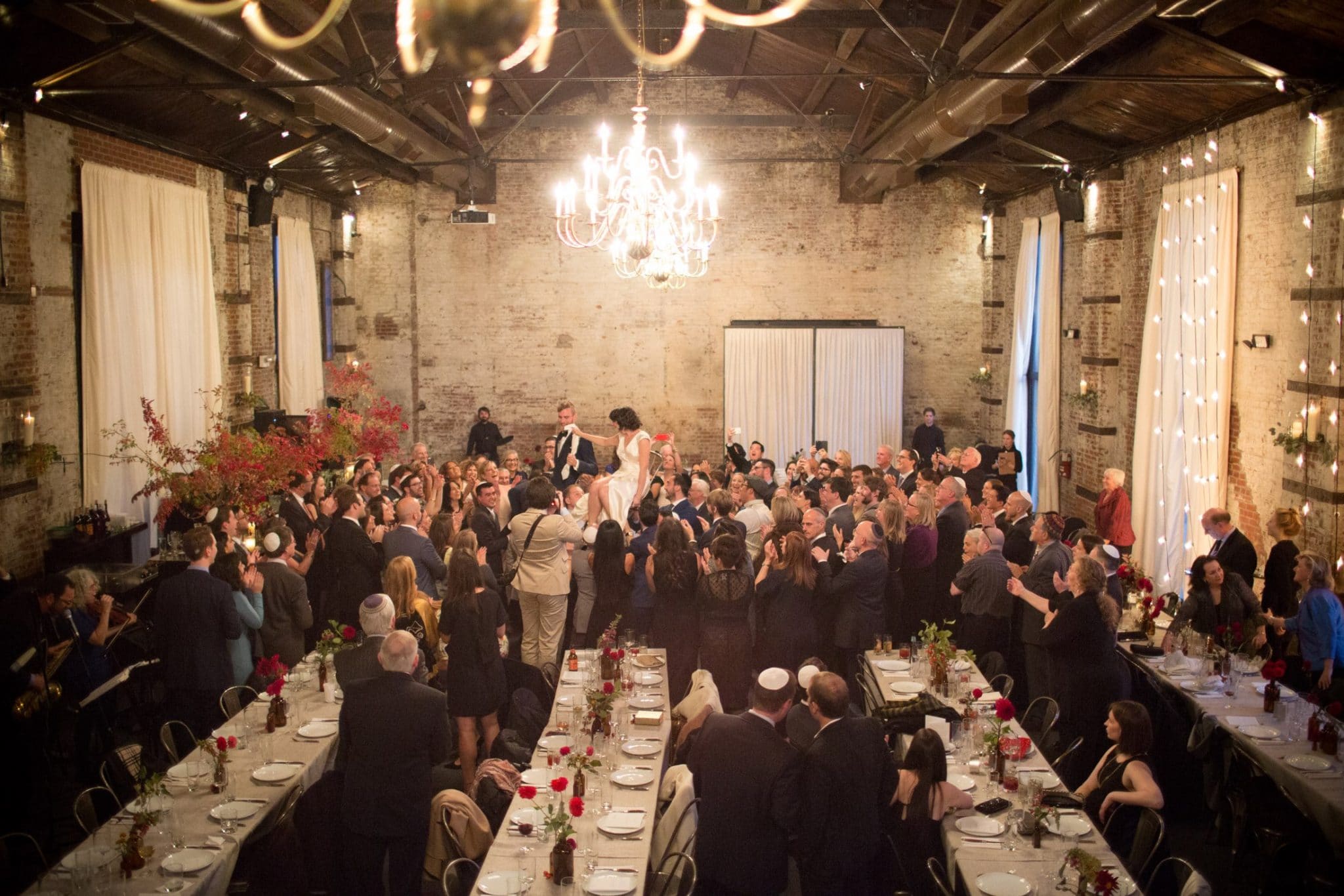
Yichud
Traditionally, there is a prohibition against non-married couples being alone together. Yichud is the first time a newly married couple may be together in private. Even if you live with your partner and have spent plenty of “alone time” together, you may welcome an interpretation of this tradition after having all eyes upon you during one of the most significant moments in your lives. Right after the wedding ceremony, before entering the fun and excitement of the wedding reception, you can celebrate the first moments of your new adventure alone together. Reflect on the importance of finding time for each other amidst the hustle and bustle of life and ask your caterer to bring you food and drinks!
The Hora
The hora is a high-energy circle dance around the couple. Bands usually know a few standard hora tunes and your DJ should be able to find hora-related tracks easily. You can go all out and hire a klezmer band to play traditional Jewish Eastern European music or enlist an Israeli dance instructor to lead customary coordinated circle dancing. Trust us when we say everyone loves a good hora!
The newly married couple and their parents are usually lifted high up into the air on chairs – get the tallest and strongest guests to help out, and use chairs with arms. It’s considered a good deed to entertain the couple and to treat them like royalty, so guests may also be invited to do skits for them. You can adapt this custom and host a fun roast of the couple at your rehearsal dinner.
Dance is central to so many cultures and religious traditions, from the hora to bhangra and haka. This is a great opportunity to mesh cultures and make everyone feel welcome.
Eating
There’s no way to practice Judaism without food – any sort of life cycle event is accompanied by a celebratory meal, and you all know about bagels and lox. The wedding feast, however simple or elaborate, is a requirement of Jewish law. This is another chance to mesh cultural and religious traditions, if you and your partner come from different backgrounds. Think chai-seasoned challah, brisket tacos, or corned beef egg rolls. If it is important for some of your guests to eat a kosher meal, one workaround is a vegetarian or pescatarian menu that avoids the issue of non-kosher meat altogether. Another opportunity to honor a friend or family member is the blessing over the challah bread or a post-meal prayer or statement of gratitude.
Sheva Brachot
The party doesn’t stop after the wedding! It’s customary for the couple to celebrate with seven more days of meals at the homes of friends and family, where the seven blessings from the wedding ceremony are recited again. One stipulation of this tradition is that a new face be present, so the sheva brachot can be a way of including guests who could not come to the wedding. It’s also a way for the couple to enter marriage surrounded by supportive community. If you’d rather escape and get to your honeymoon right away, go for it, or you may choose to host a shortened sheva brachot.
Photos by Chris Gifford of Weddings by Two.
Thank you for visiting Arq!
Arq is no longer publishing new content. We hope you'll enjoy our archived posts.